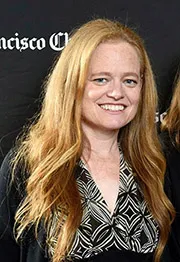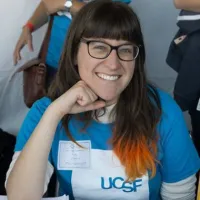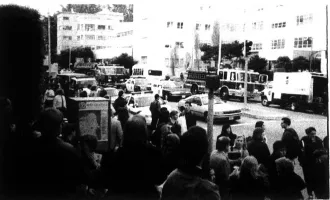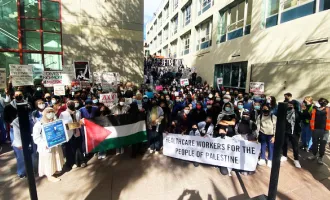
Science Meets Journalism
Understanding the complex mechanisms that make us human is a driving force behind much scientific research, but getting at the root of what makes us human is not a purely scientific pursuit.
San Francisco Chronicle science and health writer Erin Allday, who spoke at UCSF on Jan. 26, uses journalism to not only explain science but also to better understand people.
Much like a scientist, Allday starts with questions she wants to answer, works meticulously to gather data, and then presents her results.
Although Allday does not have a background in science, she has worked for over a decade with scientific literature, clinicians and research scientists to learn the language of science.
Ultimately, her work shows that science does not exist in a vacuum. Health issues and scientific discoveries impact people. Part of Allday’s job is to give a voice to these people.
The most vivid example of this is in her 2016 special project entitled “The Last Men Standing,” a long-form narrative profile of survivors of the HIV/AIDS epidemic in San Francisco. The project was the result of interviews with 50 long term survivors of HIV/AIDS.
“And every single one of them had a really compelling story,” Allday said.
“For them having somebody who wanted to hear their stories, being able to share that, was obviously such a relief and [it] meant so much to them that there were people who wanted to listen.
“That was one of the first times that it really hit me the role that we play as journalists just speaking for people who don’t have a voice. To be able to sit in a room and hear somebody’s story, to bear witness to that and then be able to tell their story it’s incredible pressure, but it’s just such an honor and a privilege.”
While Allday works to bring serious, fact-based reporting to issues, not all reporters research as thoroughly as they should or have the training or background to put things into context. And her science-based reporting is a struggle against the myths, conjectures and falsehoods that invariably surround topics such as vaccinations.
“People tend to go hyperbolic on both ends,” Allday said. “Even the people that are very pro-vaccine will make statements or write stories that aren’t backed up by science, and that doesn’t serve anybody.”
For example, in 2008, science-backed reporting shed light on the role unvaccinated communities played in several measle outbreaks in the United States. Subsequently when an outbreak of whooping cough happened some reporters incorrectly jumped to the conclusion that this too was due to unvaccinated individuals.
In actuality, the outbreak was due to a poor whooping cough vaccine and the loss of vaccine-induced immunity.
“It can be this constant battle [to confront the hype] and you have to have confidence in the knowledge that you have to be able to buck up against it,” Allday said. “The role that I can play and presumably the role that [scientists] can play is to get people real news.”
The mistrust and distrust of science, medicine, and the healthcare system, however, can make it difficult to get real news and real science to the people. What makes this issue complex, is that this lack of trust stems from real experiences and emotion-driven beliefs.
People may start out trusting their doctors, but what happens when they try multiple treatments that either don’t work or cause intolerable side effects? What if they follow all the medical advice only to run out of options? What if the doctor says there’s nothing else they can do?
Desperation sets in.
Allday describes one such situation in a special project she is currently working on. A sick child has run out of medical options and a mother is willing to try anything to cure him, including a highly experimental stem cell therapy.
One doctor tells the mother the experimental therapy will do nothing for her child, while another tells her it may save the child’s life.
“She doesn’t know who to trust,” Allday said. “She’s had reason to mistrust medicine and would do anything for her child.”
The doctor recommending the experimental therapy lost his medical license for giving patients that very therapy. While this may set off alarm bells for some, this mother views it differently, it’s reassuring. To her, this doctor is so dedicated to his cause he was willing to sacrifice his medical license to pursue it.
“The best that I can do is write about the facts as I know it, and put it out there that these are experimental treatments and there’s really no evidence that they will help her child at all,” said Allday. “Despite this, people are going to do it anyway.”
In biomedical sciences, we ask questions about mechanisms that contribute to how a body functions, we interrogate genes and cells, we attempt to understand how different perturbations over the course of a lifetime impact a person. We gather data and determine the story it’s telling.
When it comes down to it, science and journalism are not so different: both are about asking questions, both are about telling stories, and both are attempting to get at the root of humanity.



